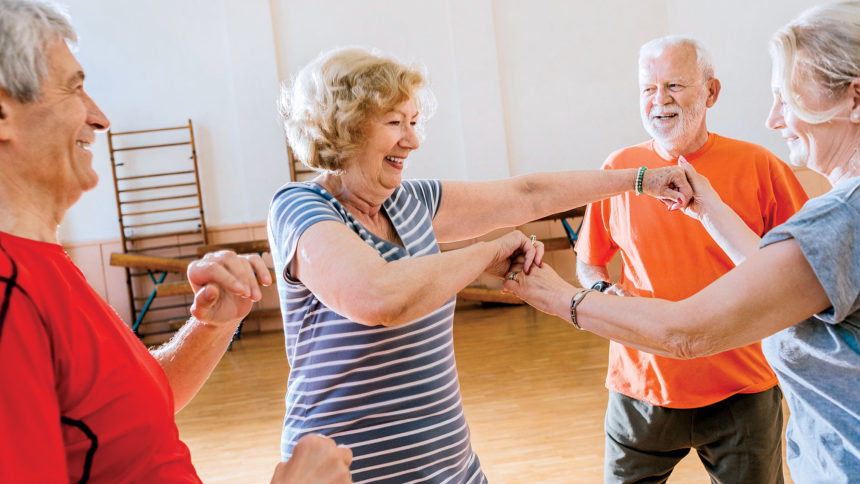
Dancing reduces the need for assistance with activities of daily living among older women, and 15 other types of exercise do not, according to the results of a newly published study.
Investigators in Japan asked 1,003 women aged 75 to 84, none of whom had ADL needs, whether they participated in any of 16 types of exercise. Over the eight years of the study, 130 of the women ended up needing assistance with at least one ADL.
Participation in dancing, compared with non-participation in that form of exercise, was associated with a 73% significantly lower likelihood of needing assistance with at least one ADL. No significant associations existed between the 15 other exercise types — walking, calisthenics, Japanese croquet, jogging, golf, ball games, hiking, dancing, aqua exercise, martial arts, yoga, bicycling, Tai Chi, bowling, quoits (a ring toss game) and strength exercise — and the need for ADL assistance.
“Although it is unclear why dancing alone reduced the risk of ADL disability, dancing requires not only balance, strength and endurance ability, but also cognitive ability — adaptability and concentration to move according to the music and partner, artistry for graceful and fluid motion, and memory for choreography,” said lead author Yosuke Osuka, Ph.D., of the Tokyo Metropolitan Institute of Gerontology. “We think that these various elements may contribute to the superiority of dancing in maintaining a higher ADL capacity.”
The study was published Wednesday in the Scandinavian Journal of Medicine and Science in Sports.



